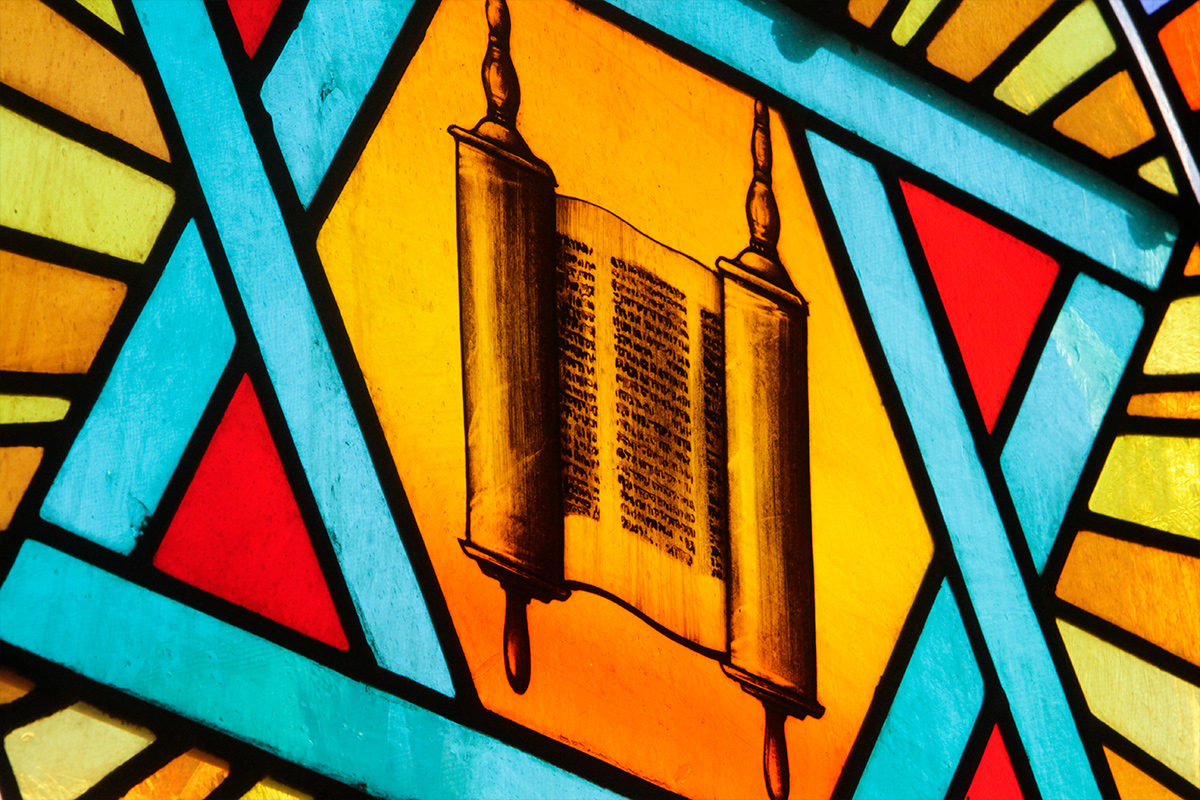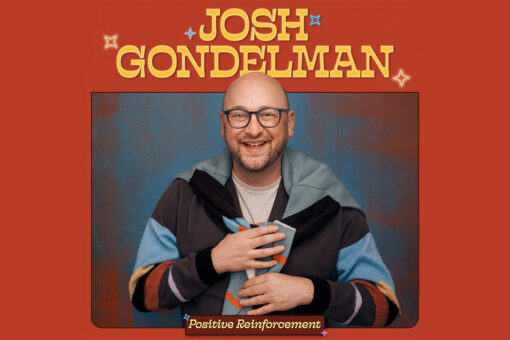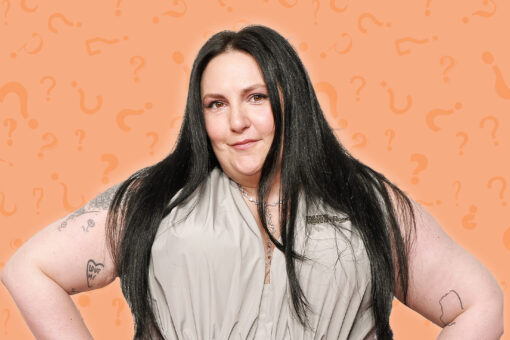Editor’s note: This piece originally ran in November of 2018, and we are re-upping it now in light of the Texas abortion ban.
Kavanaugh. I could write a book about all of the reasons why he is unfit for the Supreme Court and why his confirmation set us back as a country. I could talk about the ways that his confirmation to the Court confirmed how little we care about abusers and men who hate women. I could go on about the rights that we will likely lose. There’s a lot I can say.
But I am going to talk about abortion. To give some context, I was arrested a few weeks ago on the first day of Kavanaugh’s confirmation hearing, while shouting to the committee that confirming Kavanaugh is confirming a lifetime of taking away my reproductive rights. A few weeks after that, I spoke at a vigil outside the Supreme Court and explained that Jewish law commands us to choose life when contemplating abortion. That is, choose the life of the pregnant person. And to take away my right to choose to have an abortion as a Jewish woman is a violation of my first amendment right to religious freedom.
It is crucial to understand the implications of religious freedom, even in 2018, when Christian fundamentalists on the Supreme Court use religiously-backed arguments to deny our right to abortion. Especially because, at 22, I will be spending my entire reproductive life under Kavanaugh and whatever decisions he makes with his lifetime on the Supreme Court. So, I’m here to set the record straight.
What the Torah says:
Unsurprisingly, this is where the most dissent exists on whether or not abortion is always permissible. According to Jewish law, a fetus has no legal standing on its own. Rashi, the Talmudist of the 12th century, declared the fetus as part of the parent, not a person in its own right.
But there is also, importantly, a distinction made for “therapeutic” and “nontherapeutic” abortions. This is first mentioned in the Mishna, that if a woman’s life is in danger, it is permissible for her to have a therapeutic abortion in order to save her life. This is always true until the majority of the fetus has exited the birth canal. The fetus is only a potential life, not an actual human life, until it has been born. This concept of therapeutic abortions also applies when the life of the fetus is non-viable outside of the womb and would not survive once born. The life of the parent is always more important than the life of the fetus.
The other part of the equation is non-therapeutic abortions. That is, what are the reasons a person can get an abortion if their life is not in danger or the fetus is viable? This is where the most diverse responses are. Unsurprisingly, the more lenient reasons why abortion may be permissible correlates with more liberal streams of Judaism and Jewish thought. More egalitarian and Reform spaces have made more allowances for what qualifies as permissible than spaces that are more traditional and follow halacha (Jewish law) more closely.
That said, an overwhelming majority of Jews in the United States support abortion, more so than any other religious group. A Pew survey from 2015 found that 83 percent of Jewish adults support abortion in all or most cases. This is partially because Jews recognize that the decision to have an abortion, for any reason, is between a pregnant person and their doctor, and no one else. No one but the pregnant person can decide what is best for them and their future.
Notably, many modern texts call on us to choose life. Specifically, to choose the life of the pregnant person. To choose the life of the person and let them decide whether or not to become a parent at all. To center their life and their choices and to trust them to know what’s best.
Prayers and Rituals
A multitude of Jewish liturgy has been created in recent decades surrounding the pro-choice movement. Dozens of pro-choice Jews have spoken up about their commitment to protecting the right for people to choose.
Take this techine (a non-traditional prayer written by women) by Ariana Katz, about supporting Planned Parenthood: “Ribono shel olam, bless these sacred spaces of decision.” Katz writes about her inspiration for this poem: “We know that people of all genders access the medical care provided by Planned Parenthood clinics across the United States. When clinics are targeted by violent legislation and violent armed acts of terrorism, it is a direct attack on the care and services for women. So, a tekhine for Planned Parenthood, a prayer for all of us who seek care there, a prayer for service providers and volunteers.”
Another famous prayer reads in English, “Bless You, Rahamaima, Compassionate Nurturer of Life, who helps us choose life. Amen.” It was written by Deborah Eisenbach-Budner along with Rabbi Susan Schnur in 2013 when Deborah was choosing to have a non-therapeutic abortion and could not find existing prayers that encompassed her experience. Again, “choose life” here refers to the life of the pregnant person.
There are also various rituals for choosing to have an abortion. For choosing a therapeutic abortion, there is a dedication ceremony for parents to partake in, created by Vienna Cobb Anderson in 1991. In this ritual, parents who are choosing abortion are blessed, and the parents can choose to make an act of dedication in honor of their child. This can be a “personal, specific, and attainable” act like giving a certain amount of money every month to support a homeless child or planting a garden in the fetus’s honor.
After this dedication is made, the leader of the ceremony pours water from a pitcher into a bowl in front of the parents, symbolizing “tears of mourning, the forgiveness of guilt, and the beginning of a new life for you.”
There is also a mikveh ceremony, created by Mayyim Hayyim, for people who make the choice to have an abortion. The ceremony involves immersing in the mikveh (a ritual bath) and reading this prayer: “Oh God, grant me the hope and courage I need to accept my decision. May my tears wash away my pain. I am ready to move into a state of affirming my life, moving on from this difficult place.”
A third ritual resembles taschlich, the ritual done at Rosh Hashanah. The person takes breadcrumbs to a body of water and can “name aloud or silently whatever losses, internal feelings, or past actions she wishes to attach to the bread crumbs before casting them into the water. When they are immersed into the water, they start to dissolve, symbolizing that she has let those difficult experiences go, and can begin to move on.” Then, after casting out, they read, “As water creates change, so women are often the agents of change. May we be witnesses today, not only to this transition, but also be witnesses to women as changemakers in our larger world. As water cleanses the spirit, may we be filled with renewal, with energy, power, and direction.”
What these rituals and prayers mean:
This is just a sample of the various Jewish responses, biblical and modern, that support a person’s right to choose to have an abortion. The response from most Jews is clear: Abortion is permissible and up to the individual to decide whether or not to have one, whether or not to become a parent (either for the first time or again).
So, for Brett Kavanaugh and other Christians to use their religion as a justification to take away anyone else’s right to abortion simply doesn’t make sense. In the United States, religious freedom is a constitutionally protected right. It means that my religion and religious choices cannot be denied because of someone else’s. Overturning Roe v. Wade, or doing anything else to limit my reproductive choices, is a violation of my religious freedom. Jewish people who can become pregnant, and all people who can become pregnant have the right to make their own choices and make up their own minds about their bodies.



